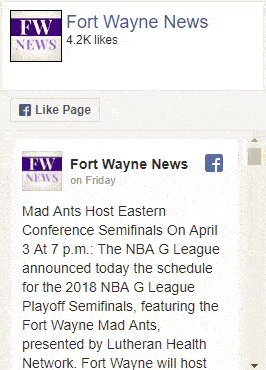From the antics of fat-cat Garfield to the cracker-barrel philosophy of Brown County savant Abe Martin, the many creations of Hoosier cartoonists are highlighted in the Indiana Historical Society’s traveling exhibition, From Pencils to Pixels: Hoosier Cartoons and Comics, opening Friday, October 2, through Tuesday, October 27 at the History Center, 302 East Berry Street, Fort Wayne, IN 46802.
Thanks to their work on the comic and editorial pages, Indiana artists have entertained and informed (with syndication) millions of newspaper readers across the country. The exhibit explores the amusing goings-on of characters from comic strips like "Chic" Jackson’s "Roger Bean," which featured the lives of a typical Hoosier family, to the editorial musings of Pulitzer Prize-winning artist John T. McCutcheon, who was a fierce opponent of America’s entry into World War II.
Drawn from the collections of the Indiana Historical Society, Indiana State Library, and other institutions throughout the state, the exhibition also examines the life and work of such Indiana cartoonists as "the dean of America’s editorial cartoonists," Evansville’s Karl Kae Knecht; artists from the Crawfordsville area known as the Sugar Crick School of Art; "the first black political cartoonist," Henry Jackson Lewis, who worked for the Indianapolis Freeman; Abe Martin creator Frank McKinney "Kin" Hubbard; Richmond’s Gaar Williams, who earned a designation as the "James Whitcomb Riley of the pencil"; and Muncie’s Jim Davis, responsible for bringing Garfield to life.
America trailed behind Europe in using picture-stories in newspapers, periodicals and books during the 19th century. In the 1860s, however, humor magazines like Puck and Life began using drawings. Political cartoons came of age in the 1870s, popularized by Thomas Nast’s work in exposing the corrupt Tammany political ring in New York City.
By the end of the 19th century, the age-old practice of telling stories with pictures underwent a revolution as Sunday "funnies" were born. In 1894, Joseph Pulitzer’s New York World successfully used color to print "Down Hogan’s Alley," generally credited as the first published American comic strip. Richard F. Outcault’s strip featured a young, urban rascal with no hair, large eyes and who wore a bright yellow nightshirt, which led to him being named "The Yellow Kid." As the 20th century began, comic strips became permanent fixtures in American newspapers.
The Fort Wayne History Center strives to serve present and future generations by collecting, preserving, and sharing the unique heritage of Fort Wayne and Allen County. The History Center proudly hosts traveling exhibits from the Indiana Historical Society to better share Fort Wayne’s story in the context of the Hoosier state.
Since 1830, the Indiana Historical Society has been Indiana’s Storyteller™, connecting people to the past by collecting, preserving and sharing the state’s history. A private, nonprofit membership organization, IHS maintains the nation’s premier research library and archives on the history of Indiana and the Old Northwest and presents a unique set of visitor experiences called the Indiana Experience. IHS also provides support and assistance to local museums and historical groups; publishes books and periodicals; sponsors teacher workshops; produces and hosts art exhibitions, museum theater and outside performance groups; and provides youth, adult and family programs. The Eugene and Marilyn Glick Indiana History Center, home of the IHS, is located at 450 W. Ohio St. in downtown Indianapolis. (www.indianahistory.org)
